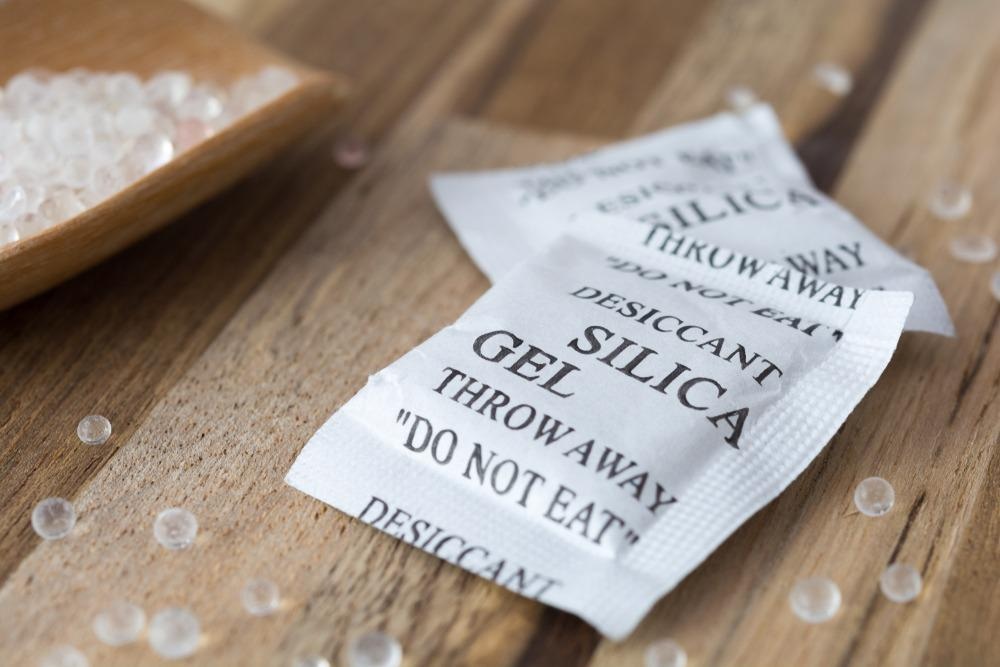Silica nanoparticles (SiNPs) or silicon dioxide are amorphous substances that have a spherical form. They can be produced in a variety of shapes and sizes, and the properties of their surfaces can be easily changed to suit several purposes. Silica nanoparticles are abrasive and absorbent in their nonporous form, but mesoporous silica nanoparticles with hexagonal pore structures have great potential in nanomedicine and drug applications.

Image Credit: jakkrit pimpru/Shutterstock.com
What are Silica Nanoparticles?
The most widely available materials of the Earth's crust include natural silica and silicates, which are primarily crystalline. Because of their excellent biocompatibility, heat resistance, low toxicity, simple synthetic approach, and massive synthetic supply, silicon dioxide nanoparticles, frequently referred to as silica nanoparticles, are attractive for biological applications. The size of the particles, porosity, crystallinity, and form of silica nanoparticles can all be carefully controlled, allowing them to be used in a wide range of industrial and research uses. Notably, the multiple surface changes accessible enable them to alter surface chemistry for drug loading, sturdy, and site-specific targeting.
This nanomaterial consistently features in research, though conflicting toxicity results have complicated its applications and necessitated further rigorous analysis. Still, substantial research into silica nanoparticles for therapeutic, diagnostic, and imaging reasons is ongoing; for example, hydrophilic medicines can be delivered to select tissues using silica nanoparticles.
Silica Nanoparticles for Drug Delivery
Silica nanoparticles utilized in improvement for nano theranostics purposes are characterized as porous or nonporous based on their morphological and, to some degree, functional characteristics. The enhanced properties between porous and nonporous silica nanoparticles, although identical in composition, are considerable, with significant consequences for their implementation and biocompatibility.
Because of their biocompatibility and ease of manufacturing, which allows surface modification, silica nanoparticles are the most distinctive feature for drug administration. Mesoporous silica, for instance, has many empty pores, which allows vast quantities of the active moiety to be enclosed.
A porous variation, known as mesoporous silica nanoparticles or MSN, adds features such as variable pore volume and size, resulting in a high encapsulation efficiency. In the case of bacterial infestations, SiNPs and their derivatives can be a useful tool for delivering antimicrobials to specific locations, thereby decreasing the impact of high medication doses and associated adverse effects.
There have been several positive studies of mesoporous silica nanoparticles containing medicines for cancer treatment. MSN have gained popularity as a drug delivery method because of their porous nature. This property enables them to hold a lot of medications with low water solubility. Encapsulated medicines are protected from enzymatic breakdown by the silica matrix.
It has also been shown that mesoporous silica nanoparticles can cause vascular endothelial malfunction, causing oxidative stress and significantly increasing procoagulant and proinflammatory responses.
Papule tactics also prevent medications from being released prematurely. By adding a targeted ligand to silica-based nanoparticles, they may be directed to sick cells while reducing detrimental effects in normal tissue. When silica nanoparticles are infused, they come into contact with blood cells and proteinases.
Reduction of Acute Inflammatory Effects of Fumed Silica Nanoparticles
Video Credit: American Chemical Society/YouTube.com
Challenges with Silica Nanoparticles
Increased interest in SiNPs for drug delivery applications has led to the requirement of a step-by-step modification of their compositions to eliminate or minimize known toxic features. Many parameters, including shape, dose, size, type of cell in the research, treatment period, surface area, and material particular, have been identified to influence silica nanoparticle cytotoxicity.
However, hemolysis and caseation are common problems for drug delivery applications since they limit effectiveness and jeopardize safety. As a result, hemocompatibility screening for nano-drug carriers is required.
Synthesis Techniques
A number of different methods may be used to make SiNPs, which can vary in size from 10 to 500 nm and have various morphologies and physicochemical features. The Stober's procedure and the microemulsion technique are the two most widely used synthesis techniques.
Silica nanoparticles constitute silica mesopores (2–50 nm diameter of pores) with distinct physicochemical features. Nanohelices, nanozigzags, nanotubes, and nanoribbons are examples of nanocarriers that may be made in various sizes and forms. These nanoparticles are used in catalytic reactions, adsorption, PDT, diagnosing sensors, separation, and medicinal drug delivery because of their adjustable electrical, optical, and mechanical capabilities.
In drug delivery, a challenge for silica nanoparticles is the surface of mesoporous silica with a significant amount of hydroxyl groups, making it particularly susceptible to aggregation. As a result, the researchers attempted to alter the surface to lower its surface energy and enhance its dispersibility and usage efficiency.
Surface physical modifications and chemical alteration are the most common approaches used today.
Future Outlooks for Silica Nanoparticles
The future of silica nanoparticles is bright. MSNs have fascinated researchers as a promising nanocarrier for nano-based tumor detection and cancer treatment among several nanostructures created. MSNs have also shown considerable promise as a biotherapeutics tool.
Silica nanoparticles applications also play an essential function in improving seed germination in plants. Silica nanoparticle is a 'quasi-essential' essential plant nutrient, regulating various physiological functions such as fertilization, germinative development, photosynthesis, and drought tolerance. As a result, assessing the impact of silica nanoparticles on different physiological processes is critical.
Continue reading: Developing Fingerprints Using Silica Nanoparticles.
References and Further Reading
Abbasi, M., et al. (2021) Mesoporous silica nanoparticle: Heralding a brighter future in cancer nanomedicine. Available at: https://doi.org/10.1016/j.micromeso.2021.110967
Chen, L., et al. (2018) The toxicity of silica nanoparticles to the immune system. Available at: https://doi.org/10.2217/nnm-2018-0076
Karaman, D., and Helene, K. (2018) Chapter 1 - Silica-based nanoparticles as drug delivery systems: Chances and challenges. Available at: https://doi.org/10.1016/B978-0-12-813661-4.00001-8
Selvarajan, V., et al. (2020) Silica Nanoparticles—A Versatile Tool for the Treatment of Bacterial Infections. Available at: https://doi.org/10.3389/fchem.2020.00602
Disclaimer: The views expressed here are those of the author expressed in their private capacity and do not necessarily represent the views of AZoM.com Limited T/A AZoNetwork the owner and operator of this website. This disclaimer forms part of the Terms and conditions of use of this website.